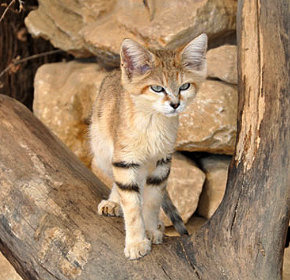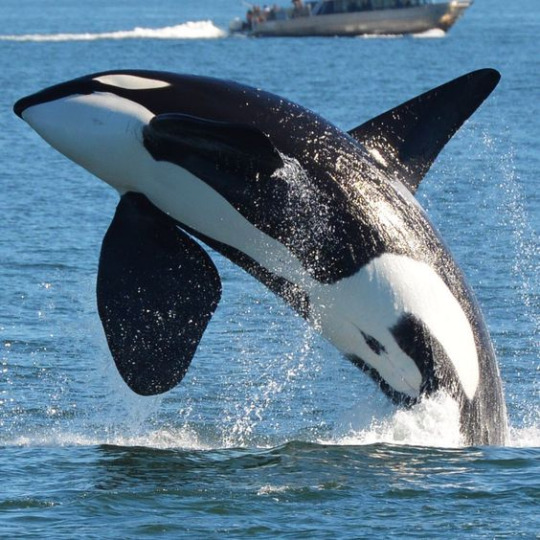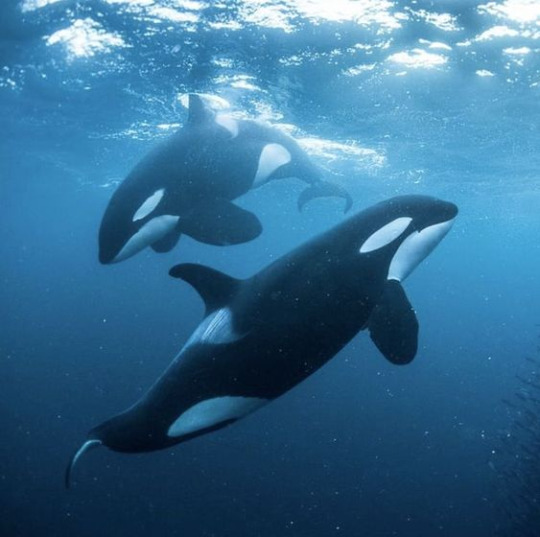#class: mammalia
Explore tagged Tumblr posts
Text






#poll#Class: Mammalia#Order: Rodentia#Family: Sciuridae#Genus: Sciurus#Sciurus Vulgaris#Range: Palearctic
517 notes
·
View notes
Text
The SAND CAT (Felis margarita) is a small wild cat that inhabits sandy and stony deserts far from water sources, the only felid to appear exclusively in desert habitats. Largely solitary, sand cats are hardy and emotionally tough, likely reserved or private, but not particularly assertive and likely to be docile. The sand cat's short ears set low on the head aid in the detection of prey moving underground: these animals are highly perceptive and aware. Long hair covers the soles of a sand cat's paws and insulates the foot pads while moving over hot sand; this feature makes the cat's tracks obscure and difficult to identify: sand cats are tough and enduring, focused and persistent, highly specialised, and likely secretive. With sandy to light grey fur well matched to desert habitats, the sand cat's camouflage protects it from predators: these animals are guarded and passive, likely manipulative and avoidant, gentle, retiring, and somewhat apathetic. Sand cats are habitual, resting in underground dens during day and hunting at night. These animals are highly cautious and strongly determined, surviving indefinitely on moisture gained from their prey rather than risk vulnerability at watering holes. Methodical and efficient, sand cats are disciplined, dutiful and diligent, and will bury a carcass too large to eat in one sitting rather than waste a possible meal. These animals are loose-bonding and somewhat detached, quietly confident and self-assured, patient and tolerant, but not particularly trusting, and not likely to be loyal or affectionate.
The SAHARAN SAND CAT (Felis margarita margarita) is smaller in size with brighter, more yellow fur with more pronounced markings and 2-6 rings on the tail: these cats are mildly more expressive, dramatic, and passionate.
The TURKESTAN SAND CAT (Felis margarita thinobia) is larger in size with a darker, more greyish coat with less pronounced markings and only 2-3 rings on the tail. These cats are likely more calm, guarded and apathetic, and highly indulgent and relaxed.



#sand cat#felis margarita#genus: felis#family: felidae#order: carnivora#class: mammalia#daemon analysis#daemonism
33 notes
·
View notes
Video
National Zoo's Cheetah Cubs Go Outside for the First Time by Smithsonian's National Zoo Via Flickr:
#Species: jubatus#Genus: Acinonyx#Family: Felidae#Order: Carnivora#Class: Mammalia#Phylum: Chordata#Kingdom: Animalia#Cubs#SCBI#CRC#Front Royal#VA#USA#Smithsonian Conservation Biology Institute#National Zoo#cheetah cubs#cheetah#Zazi#Amani#cross-foster#flickr
16 notes
·
View notes
Text
Another puppy Katie vid!!!
#katie may#katie#Videos#phylum: chordata#Class: Mammalia#Order: Carnivora#Family: Canidae#Genus: Canis#Canis familiaris#australian shepherds#blue heelers#herding dogs#working dogs#dogs#mammals#farm animals#my pets
8 notes
·
View notes
Video
Smithsonian’s National Zoo Andean Bear Brothers Receive Names by Smithsonian's National Zoo Via Flickr: Photo Credit: Abby Wood, Smithsonian's National Zoo In this photo: Andean Bear cubs Mayni (L) and Muniri (R) with mom Billie Jean. The National Zoo’s rambunctious and charismatic 19-week-old Andean bear cubs have names. In a poll conducted on the Zoo’s website, fans elected to name Cub 1 Mayni [MY-nee], a moniker that in the Aymara language means “unique.” The name selected for Cub 2 was Muniri [moo-NEE-ree], which means “loving” in the Quechua language. The family’s public debut will take place Saturday, March 28, at 10 a.m., weather permitting. In collaboration with Univision’s ¡Despierta America!, the Zoo invited the public to cast their vote for names that reflected the cultural significance of Andean bears to the Quechua and Aymara, the indigenous communities of the Andes region, the native habitat of Andean bears. It is important for each cub to know its name now that keepers have started training sessions. They have spent the past few weeks teaching the bear brothers behaviors that will help animal care staff evaluate their health. Since early March, the cubs have been acclimating to their yard and the variety of new smells, trees, rocks and other environmental enrichment in their yard. Keepers spread hay bedding around the yard to keep the cubs safe while they explore and play. Andean bears are very adept climbers, and the cubs have been testing out their skills. They will remain with Billie Jean for approximately one year. The cubs were born at the Zoo Nov. 10 and 11, 2014, and are significant births for the population of Andean bears in human care. They are the third litter of cubs born at the Zoo since 2010, and one of only five surviving litters born in North American Zoos in the past 10 years. To follow the cubs' progress, check for news on the Zoo's website and its Facebook, Twitter and Instagram accounts. Andean bears are South America’s only bear species, and as their name suggests, they live in the Andes and outlying mountain ranges. Andean bears are listed as vulnerable on the International Union for Conservation of Nature's Red List of Threatened Species, and it is estimated that there are only 20,000 left in the wild. Habitat destruction and wildlife tracking pose the greatest threats to their survival. The Smithsonian is bringing the cultural vibrancy, history and biodiversity of Peru and the Andean region of South America to the nation’s capital. Through a series of programs, exhibits and events across the Smithsonian, visitors will learn about the rich history and achievements of indigenous communities, the importance of cultural continuity and traditions, and the conservation of biodiversity in the region. # # #
#Species: ornatus#Genus: Tremarctos#Family: Ursidae#Order: Carnivora#Class: Mammalia#Phylum: Chordata#Kingdom: Animalia#Billie Jean#cubs#Washington#DC#USA#flickr
1 note
·
View note
Text
599 Mammalia (Mammals)
they are BICKERING
#class 500 – science#590 animals (zoology)#599 Mammalia (Mammals)#dewey decimal system#makeitdewey#cats#cat
29K notes
·
View notes
Note
hi can you tell us what class hyenas are :0?
hyaenidae!!! they arent quite canines or felines theyre entirely their own family !!!! :DDD
0 notes
Text

[ID: an illustration of a fluffy brown canine facing to the right, on a teal background with dandelions. end.]
RACCOON DOG ★ Nyctereutes procyonoides
CLASS MAMMALIA, FAMILY CANIDAE
A small canine native to East Asia named for its raccoon-like facial markings. Unlike most canids they hibernate through cold winters and regularly climb trees.
479 notes
·
View notes
Text
Professor Pierre Aronnax, looking upon the gargantuan dark monster in the water, knowing full well the oceanic battle that is about to take place may even prove fatal: I think this guy is phylum Chordata, class Mammalia, Infraorder Cetacea… :)
120 notes
·
View notes
Photo

🦝 The class Mammalia /. London: Printed for Geo. B. Whittaker, 1827.
61 notes
·
View notes
Text




#poll#Class: Mammalia#Order: Carnivora#Family: Canidae#Genus: Canis#Canis Latrans#Range: Nearctic#Range: Neotropical
305 notes
·
View notes
Note
Hi!!!
Could you do some orca and/or Eurasian otter analysis? 👀
The ORCA (Orcinus orca), or killer whale, is a toothed whale that is the largest member of the oceanic dolphin family. Orcas are highly social, cooperative and close-bonding, confident and assertive, but adaptable and not particularly picky or fussy. The orca has excellent eyesight and hearing and a good sense of touch: these animals are highly perceptive, sensitive and aware, tactile, hands-on and practical. Orcas disable their prey before killing it and are able to detect the location and characteristics of prey in the water by emitting clicks and listening for echoes: these animals are shrewd, intuitive and somewhat cautious. Orcas frequently engage in surface behaviour like breaching and tail-slapping: they are playful and highly active. With strong teeth, distinctive pigmentation and jaws that exert a powerful grip, orcas are tough, assertive and bold, but not particularly controlling or manipulative. These animals are impulsive and somewhat reckless, but highly determined and dedicated, and may beach temporarily to grab prey before wriggling back to sea. Orcas learn to copy behaviours from one another: these animals are proficient, capable and quick to learn. Orcas do hunt seabirds but are more likely to kill and leave them uneaten: they are heedless, not frugal and perhaps wasteful. These animals are hostile and somewhat bullying, and will engage in surplus killing, that is, killing that is not designed to be for food. Orcas are confident, likely bullish, expressive and highly communicative.



#orca#orcinus orca#genus: orcinus#family: delphinidae#order: cetartiodactyla#class: mammalia#daemon analysis#daemonism
24 notes
·
View notes
Video
African Lion by Smithsonian's National Zoo Via Flickr: Photo credit: Mehgan Murphy, Smithsonian's National Zoo
#Species: leo#Genus: Panthera#Family: Felidae#Order: Carnivora#Class: Mammalia#Phylum: Chordata#Kingdom: Animalia#cub#baby#Luke#Washington#DC#USA#flickr
25 notes
·
View notes
Text
An older video of puppy Katie!!
#katie#katie may#Videos#phylum: chordata#Class: Mammalia#Order: Carnivora#Family: Canidae#Genus: Canis#Canis familiaris#Australian shepherds#Blue heelers#Herding dogs#Dogs#Mammals#My pets
7 notes
·
View notes
Video
Acouchi by Smithsonian's National Zoo Via Flickr: Photo Credit: Smithsonian's National Zoo With temperatures soaring, the Smithsonian’s National Zoo continues to take good care of its creatures—human and non-human alike! Here’s what we do for our animals in this heat: •Most of the animals that can go outside are offered a choice year round—to go outside or to stay in their indoor exhibit. Most indoor exhibits are cooled with AC in the summer and warmed with heat in the winter. •Giant pandas have air-conditioned and radiant water-chilled grottos. They have AC indoors. They’re not huge fans of heat, so on hot days they mostly stay inside. •Many animals are offered fruitsicles as enrichment, which can be particularly refreshing this time of year. Fruitsicles are popsicles—they are usually diluted fruit juice frozen with cut-up chunks of fresh fruit in them. Gorillas, elephants and other bears enjoy these treats, too. (Note that these aren’t just a summertime treat! They receive them year-round.) •Some animals have the option of taking a dip in their outdoor pools: Andean bears, pandas, lions, tigers, anteaters and otters. Others are acclimated to this weather. Our visitors have a number of options for staying cool: •Water fountains are available around the park. •They can enjoy a number of “misters” around the Zoo. •The Zoo sells a variety of ice cream and frozen treats, along with cold beverages and bottled water. •All of our animal houses are air conditioned.
#Species: acouchy#Genus: Myoprocta#Family: Dasyproctidae#Order: Rodentia#Class: Mammalia#Phylum: Chordata#Kingdom: Animalia#Summer themed enrichment#Washington#DC#USA#flickr
1 note
·
View note
Text
Ruby: Hey, Jaune, can you help me with something?
Jaune: Sure thing, Ruby! What's up?
Ruby: Well, I was just thinking, but we're both humans, right?
Jaune: Uh, yeah?
Ruby: Humans are primates, and all primates belong to the Mammalia Class.
Jaune: R-Right. Okay?
Ruby: And since we are both creatures classified as mammals, and nothing more, then it would only make sense that we should imitate what other creatures found in our classification by following the examples of said creatures found on documentary programs about naturalism topic, usually airing on TV.
Jaune: ...
Ruby: In other words...
Ruby: You and me, baby, ain't nothin' but mammals, so let's do it like they do on the Discovery Channel~.
Jaune: Do it again now~!
106 notes
·
View notes

